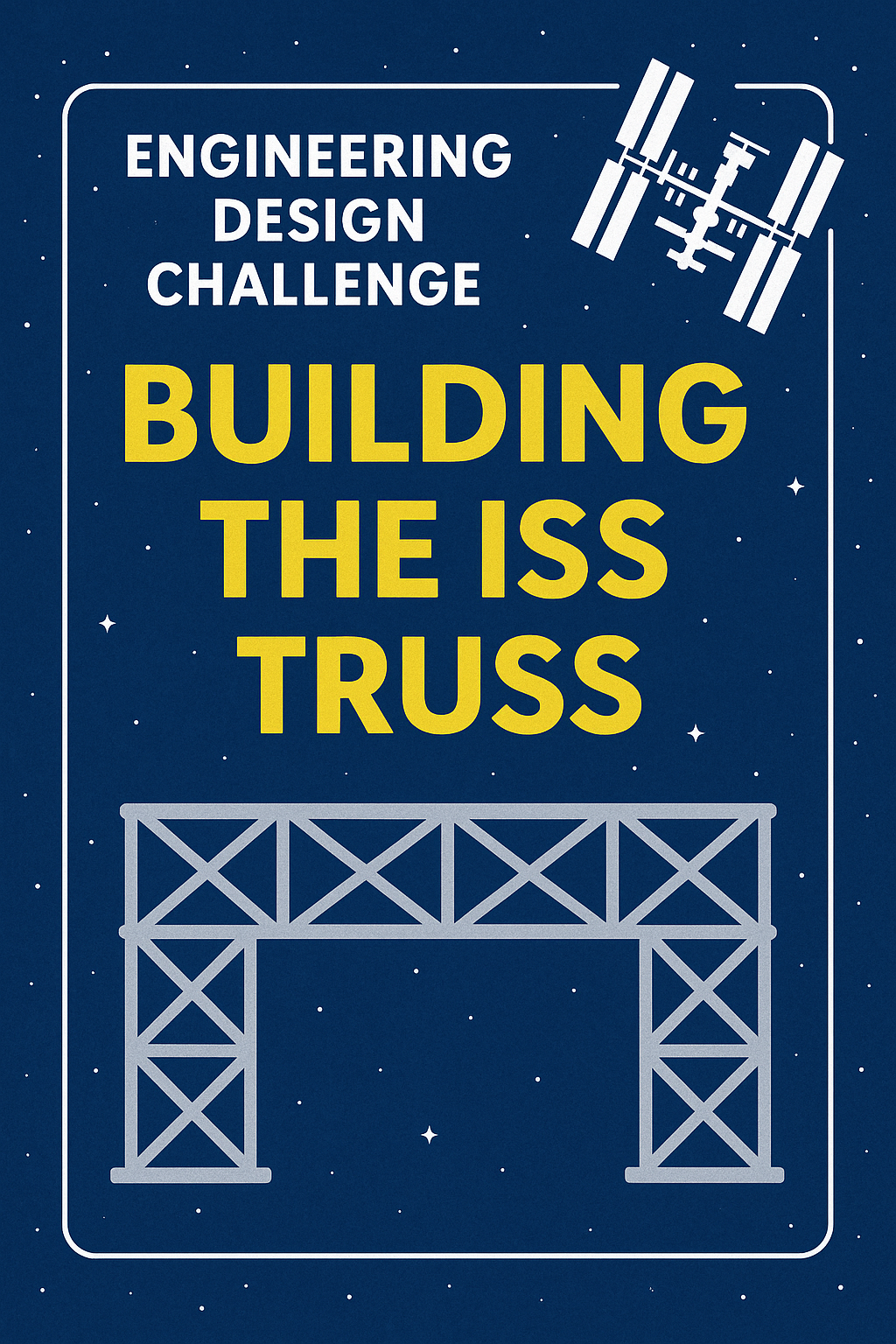DECEMBER ACTIVITIES COMING SOON
Welcome, Educators and Parents!
This November, we are thrilled to celebrate 25 years of human presence in space aboard the International Space Station (ISS) — a remarkable achievement in science, technology, and international collaboration.
To honor this milestone, our monthly STEM packet invites curious young minds to explore engineering challenges inspired by real-life space missions. Each activity is designed to foster creativity, critical thinking, and teamwork — all essential skills for future scientists and engineers.
Your child or students will take on the roles of space engineers and astronauts, engaging in three hands-on design challenges:
Concepts Learned:
• Structural engineering basics
• Strength through shapes (triangles resist bending)
• Load distribution in beams and frames
• How the ISS truss supports solar panels and connects modules
• Real-world engineering applications (bridges, towers, cranes, spacecraft)
Engineering Design Challenge: Build the ISS Truss
Skills Developed:
• Problem-solving through design testing
• Fine motor skills (cutting, connecting, balancing)
• Measurement and precision
• Critical thinking about structural stability
• Collaboration and teamwork
• Persistence and resilience through redes
Engineering Design Challenge: Design a Robotic Arm
Concepts Learned:
• Simple machines (levers, pivots, hinges)
• Mechanical engineering basics
• How astronauts use Canadarm2 on the ISS
• Translating human motion into a mechanical device
• Real-world robotics in manufacturing, medicine, and space exploration
Skills Developed:
• Designing moving parts for a specific task
• Understanding motion, rotation, and grip
• Sequencing and planning build steps
• Creativity in solving functional problems
• Team collaboration (designing and testing together)
• Precision control to handle delicate object
Engineering Design Challenge: Docking at the Space Station
Concepts Learned:
• Orbital movement and how docking works
• Precision control and gentle contact in space
• Use of thrusters, sensors, and cameras for alignment
• Real-world astronaut training for manual and automated docking
• The importance of teamwork and communication in space missions
Skills Developed:
• Hand-eye coordination for precise movement
• Spatial awareness and target alignment
• Strategic thinking and adjustment based on results
• Patience and controlled speed under pressure
• Perseverance through repeated trials
• Analytical thinking to improve each attempt



